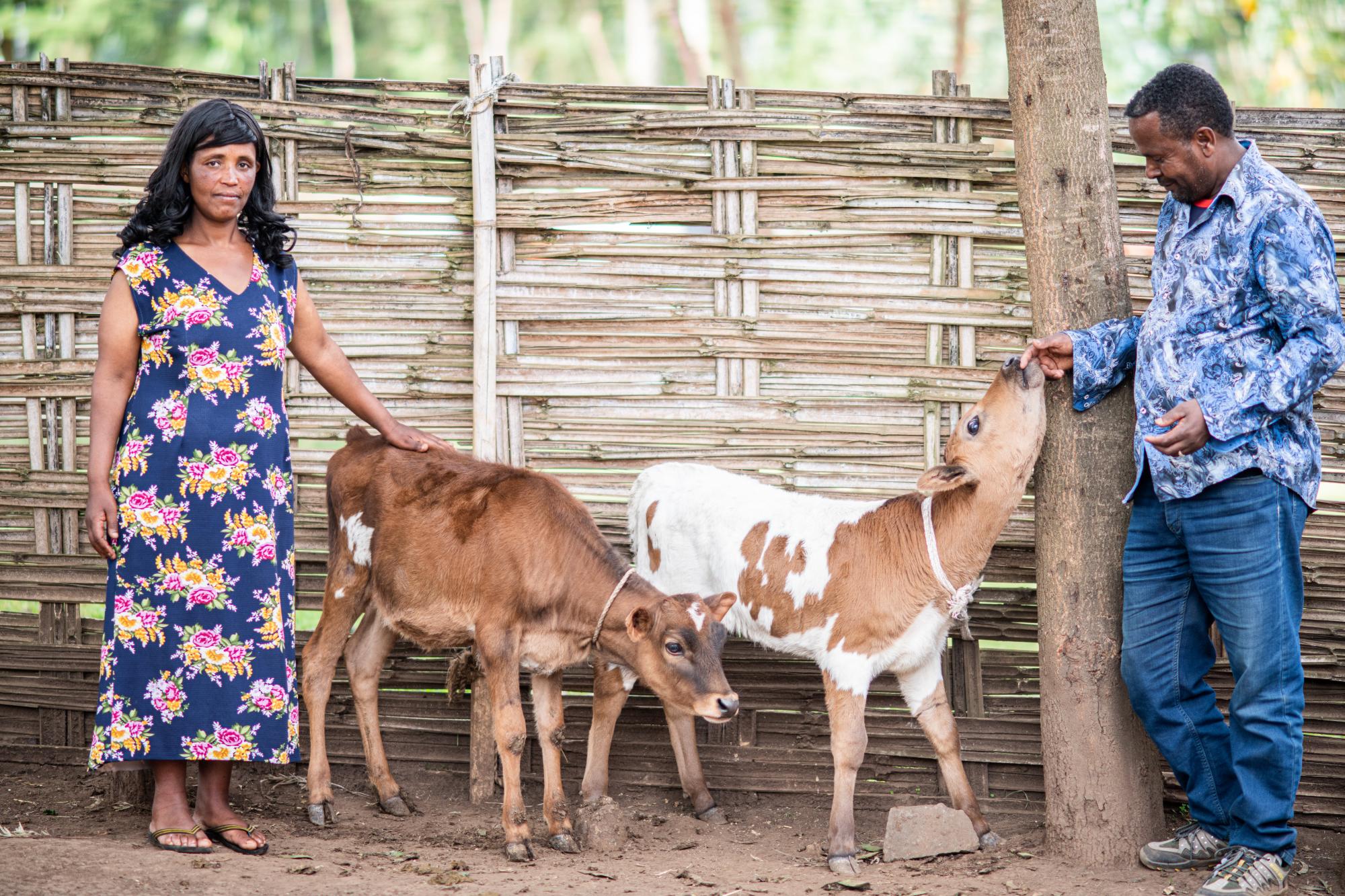
Livestock pathways to 2030: One Health
A series of briefs highlighting seven key areas for governments, investors, experts and policymakers
This series of briefs highlights seven key areas and 22 practical action areas that governments, investors, experts in One Health and policymakers can promote and invest in. These areas highlight the linkages and connections between interventions and underscore the need for systems thinking.
One Health recognizes the interconnection between people, animals, plants, and their shared environment and works across scales for better health outcomes.
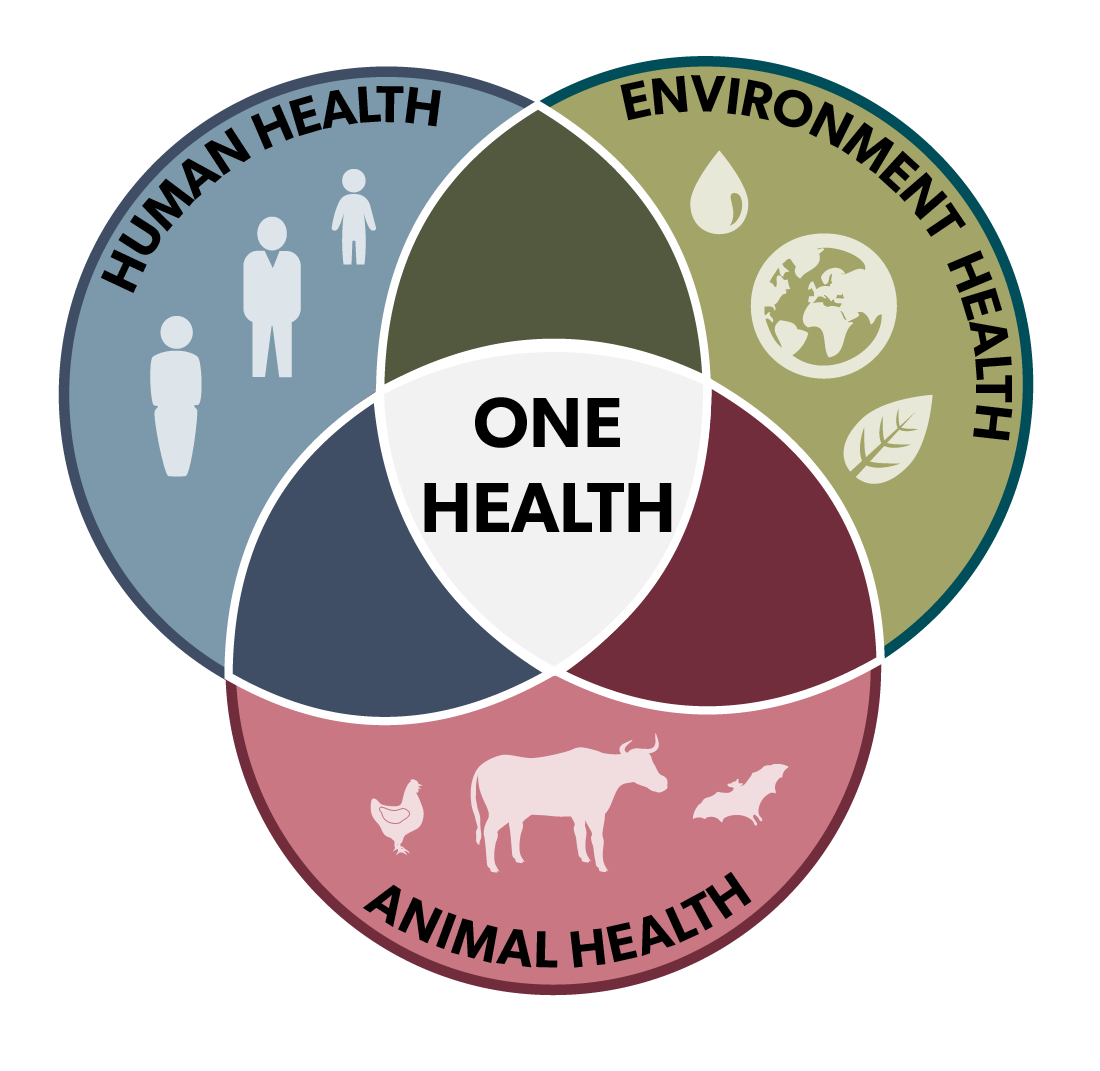
Over the coming months, experts and researchers will be reviewing the evidence and experiences in these seven areas to produce a One Health investment report with the potential to enhance global health security if fully implemented.
If you are interested to learn more or contribute, contact: Cynthia Mugo at c.mugo@cgiar.org
The One Health challenge and opportunity
Successful One Health approaches require changes in outlook and action. They demand a shift from a disease-focus to a more systems-based one, rethinking the idea of innovation to embrace new ways of working as well as technological solutions, and sharing learning and evidence.
The 2020-21 coronavirus pandemic alone has killed millions of people and cost billions of dollars in damage and lost livelihoods. It is just the latest example of a previously unknown disease to jump from animals to people. It is unlikely to be the last.
These complex health risks and burdens cross disciplinary, national and species boundaries so traditional, parallel sectoral approaches based around public health, veterinary services or environmental management are inadequate.
One Health approaches work across sectors and scales for better health outcomes for people, animals and the environment.
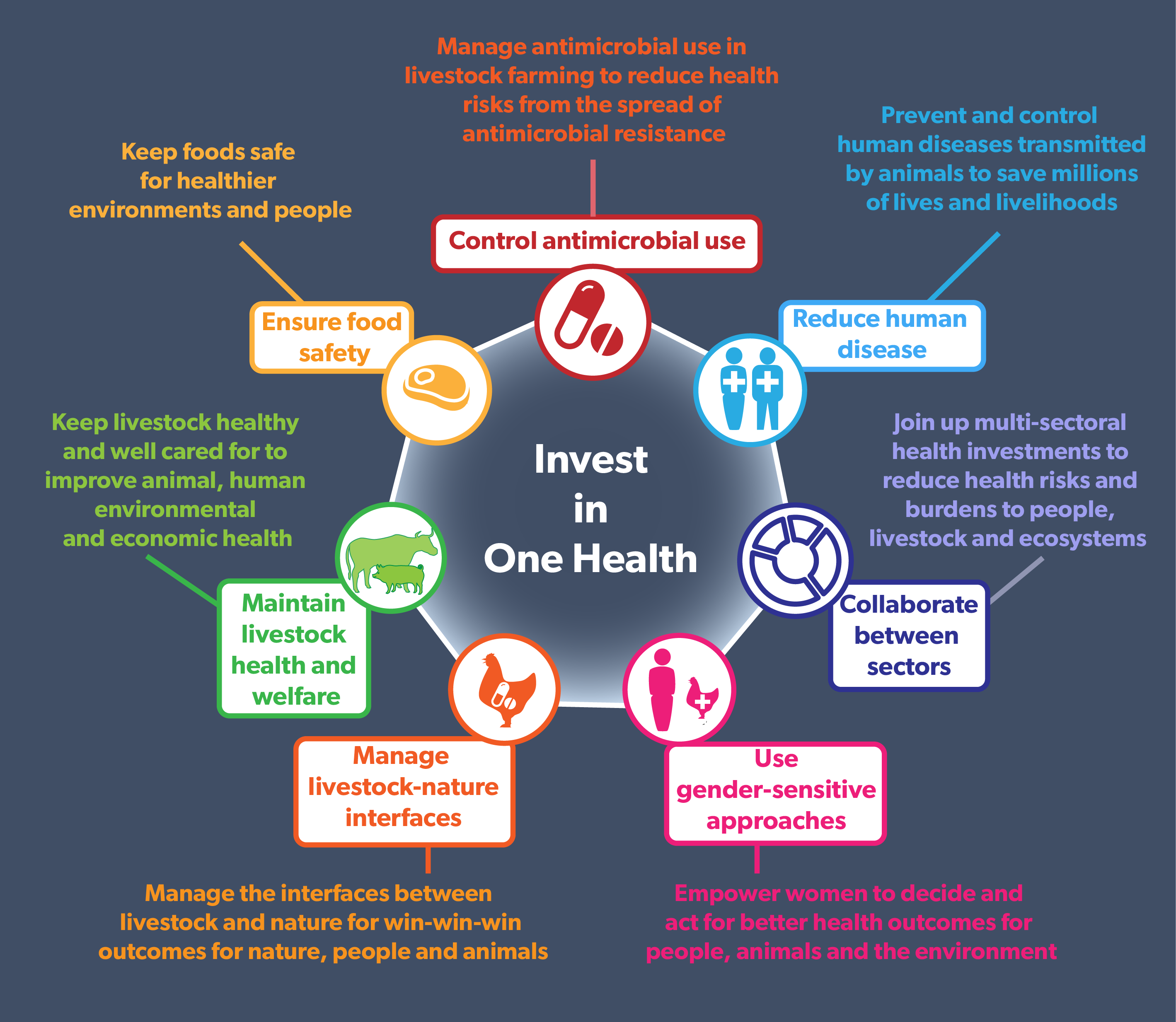
One Health for sustainable food systems
Of central importance to ensuring the global health of both people and our food systems is enhancing sustainable livestock pathways out of poverty in lower income countries. Farm animals continue to remain lifelines for most of the world’s poor today—for their food, nutrition, farm and economic security. But livestock can also pose threats to human and environment health, and disease threats arising in poor countries know no borders. Only by supporting more efficient, safe, equitable and sustainable livestock systems of the poor will we be able to ensure healthier people, animals and environments.
Taking a multisectoral One Health perspective in food systems facilitates policy and investment solutions that look at the potential synergies and trade-offs from different investments rather than looking for parallel or one-size-fits-all solutions. It also moves the conversation away from binary diet choices – animal-sourced foods vs plant-based – highlighting instead the linkages between human, animal and ecosystem health and resilience. One Health approaches also usefully move conversations away from unproductive binary diet choices—whether to consume meat, milk and eggs or only plant-based foods, for example—and highlight instead the many close links among human, animal and ecosystem health and resilience, and how we can best manage those links for the good of all.
One Health Brief no. 1 Joined up investments reduce health risks and burdens to people, livestock and ecosystems
One Health approaches break down sector silos, unite experts and deliver coherent policies, offering the most effective approach to tackling the health of animals, people and the environment in areas where they intersect.
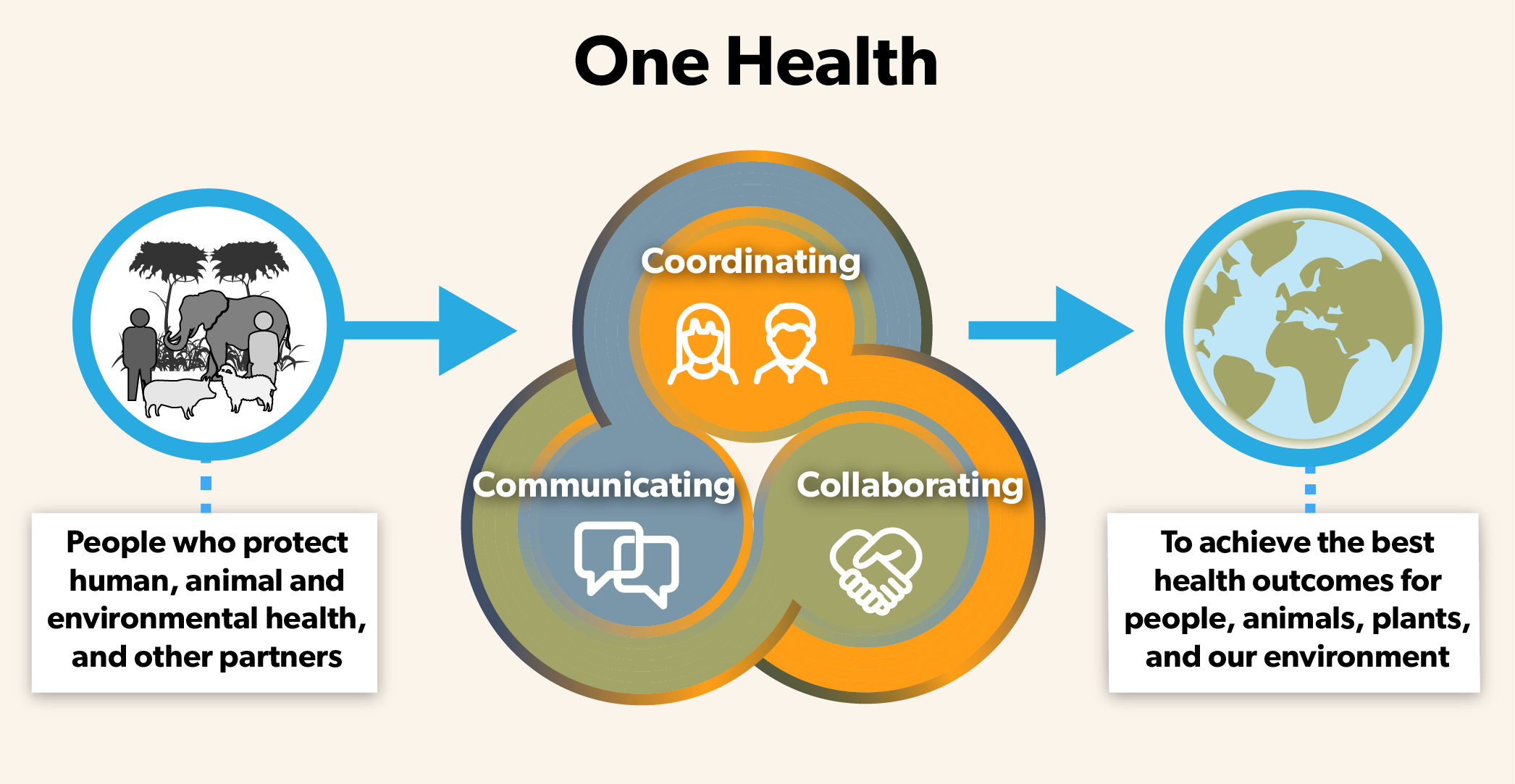
One Health Brief no. 2Preventing and controlling human diseases transmitted by animals saves millions of lives and livelihoods
People are healthier, safer, and better off when their livestock and the animals around them are healthy. Detecting zoonotic diseases early and managing them effectively before they jump to people is essential.
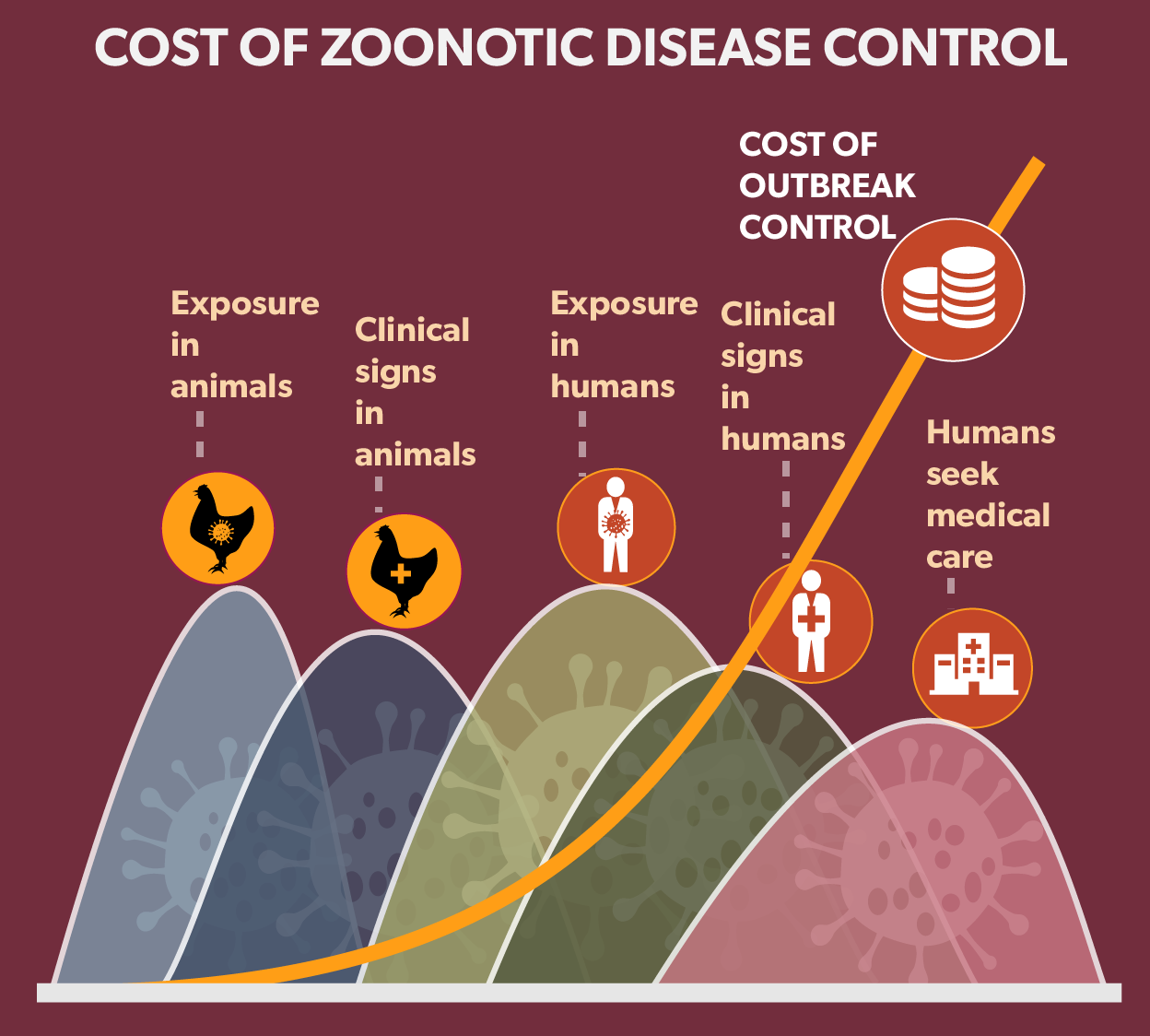
One Health Brief no. 3Managing antimicrobial use in livestock farming promotes human and animal health and supports livelihoods
One Health practices in livestock farming and aquaculture can curb the spread of antimicrobial resistance - a threat to the lives of millions of people and animals in low- and middle-income countries.
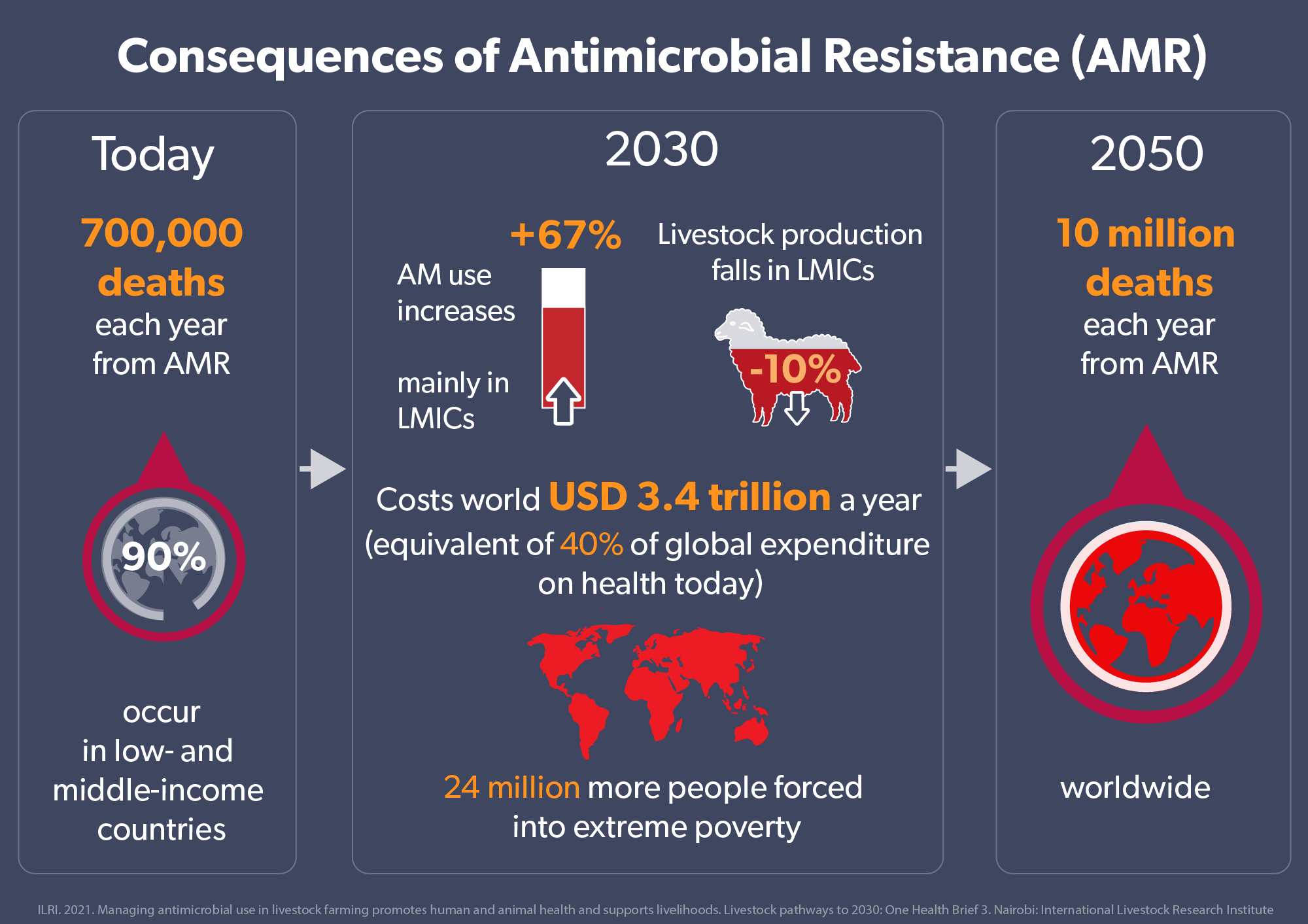
One Health Brief no. 4Keeping foods safe leads to healthier people, livestock and environment
People are healthier when their food is nutritious, safe from germs and chemicals, and is handled in clean environments.
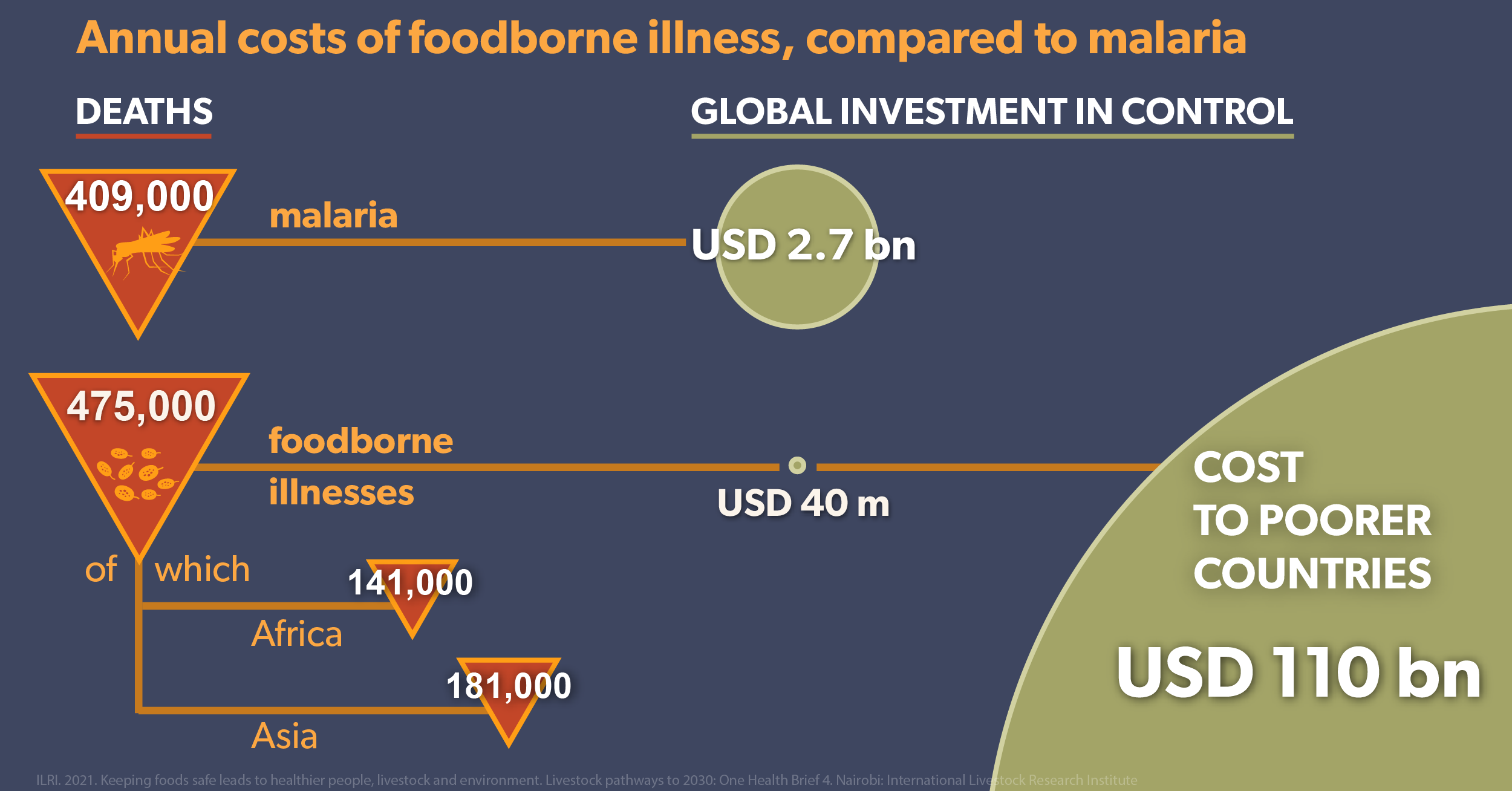
One Health Brief no. 5Keeping livestock healthy and well cared for improves animal, human, environment and economic health
People's lives and livelihoods directly benefit from investments in the health and welfare of their livestock. Good animal health and welfare also safeguard national economies from trade restrictions and bans.
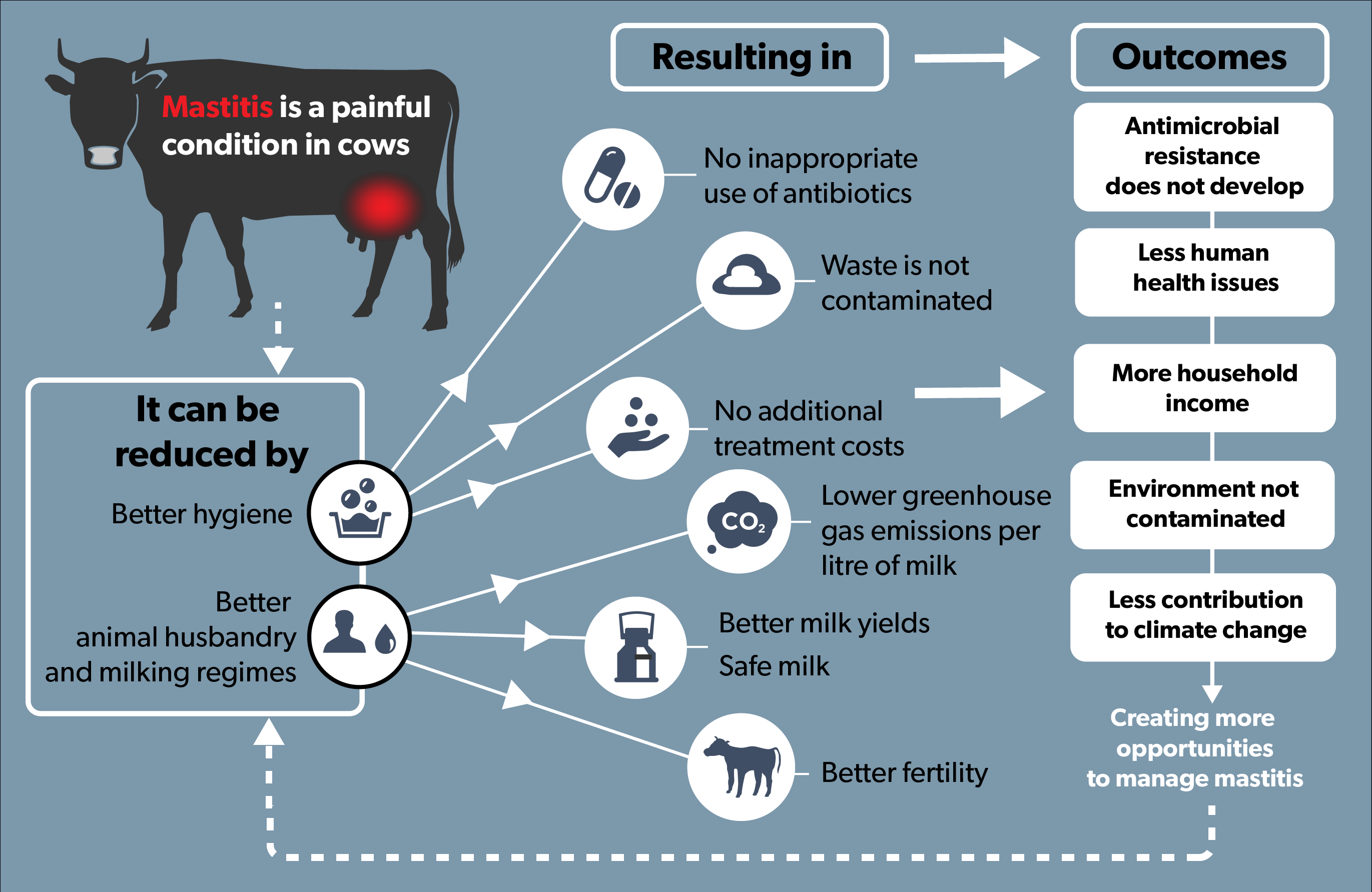
One Health Brief no. 6Managing the interfaces between livestock and nature produces win-win-win outcomes for nature, people and animals
People and nature are healthier when the environmental hazards of livestock-keeping and wildlife interaction are reduced and the positive impacts of livestock on soil, biodiversity and carbon sequestration are enhanced.
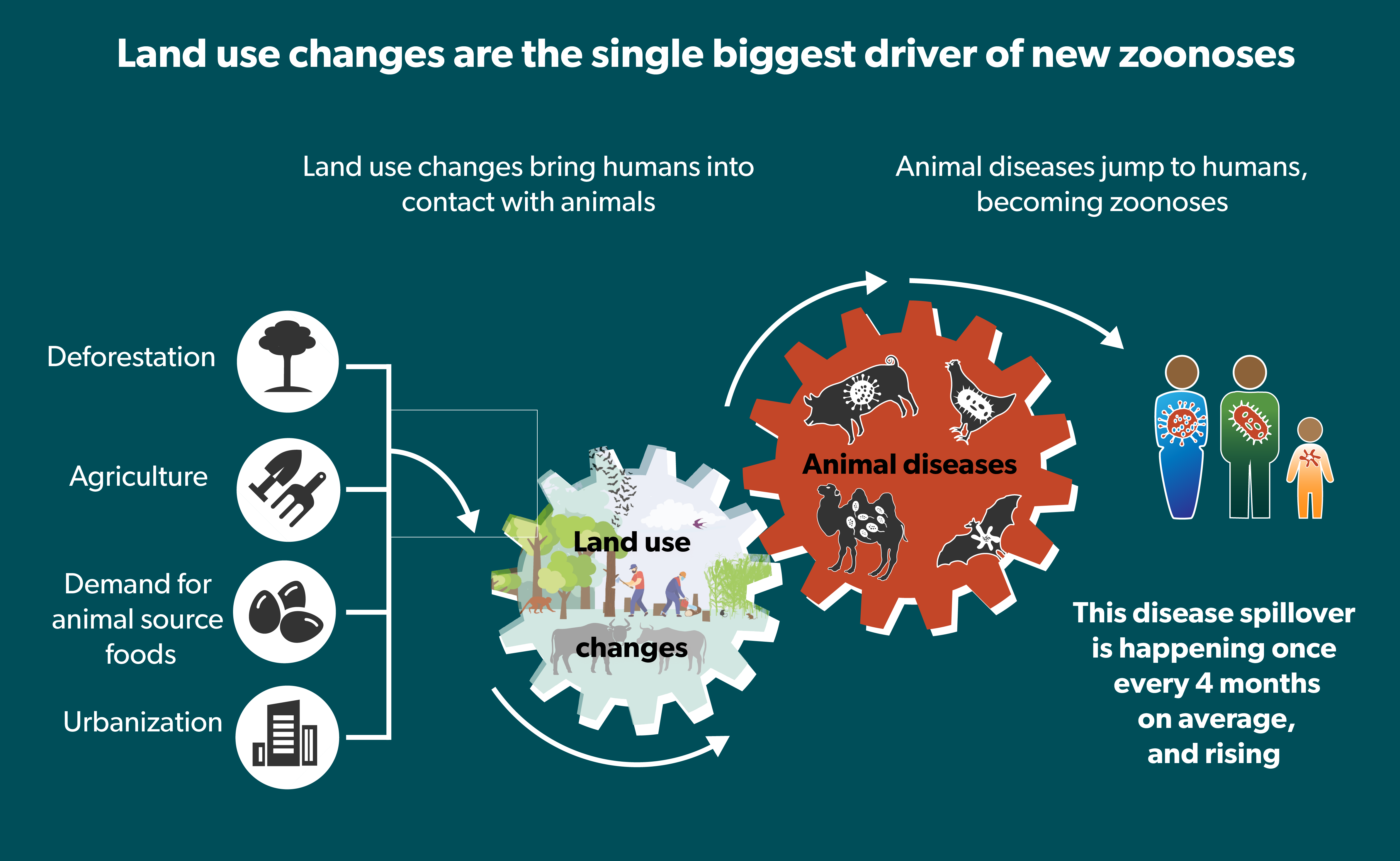
One Health Brief no. 7Women’s empowerment leads to healthier people, animals and environments
Our health is improved when decisions include all perspectives; investing in gender-responsive interventions increases the potential for success and leaves no-one behind.
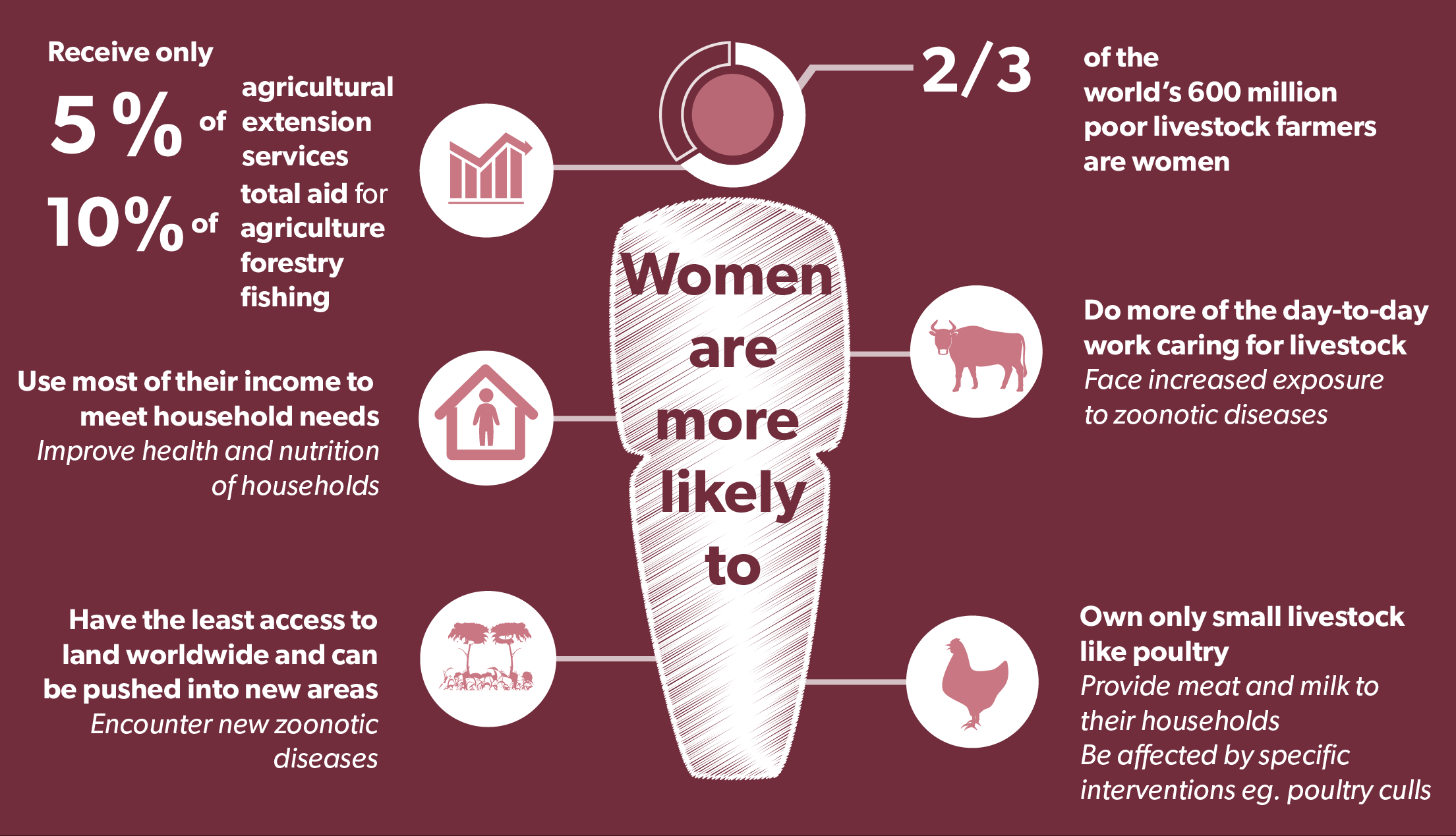
If you are interested to learn more contact: Cynthia Mugo at c.mugo@cgiar.org